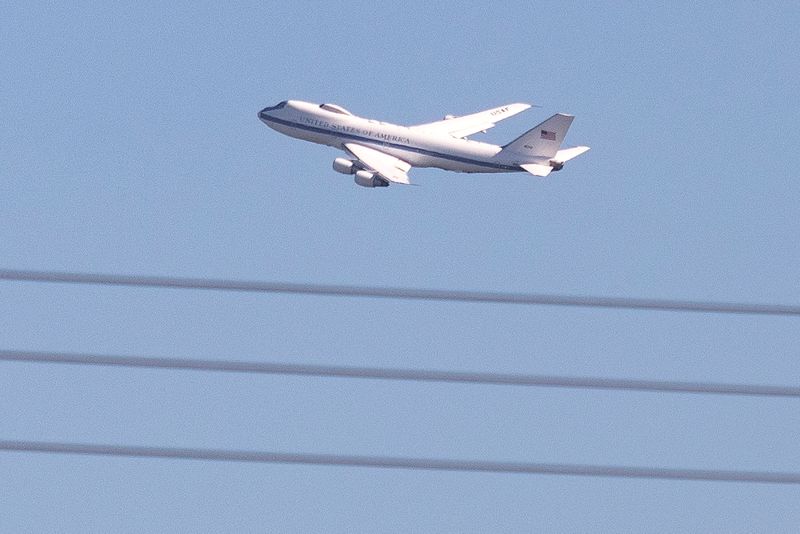Exclusive-Boeing eliminated from US Air Force’s ‘Doomsday Plane’ competition

By Valerie Insinna and Mike Stone
WASHINGTON (Reuters) – The U.S. Air Force has eliminated Boeing from its competition to develop a successor to the E-4B Nightwatch, Boeing confirmed on Friday, shaking up the battle to build the next version of the aircraft known as the “Doomsday Plane” due to its ability to survive a nuclear war.
The move leaves privately-held defense contractor Sierra Nevada Corp as the lone company publicly vying for the Survivable Airborne Operations Center (SAOC) contract to eventually replace a fleet that has been in use since the 1970s.
The Air Force, which plans to award a SAOC contract in 2024, declined to comment on whether other firms had submitted bids.
“We cannot discuss an active source selection and detailed program information is classified,” an Air Force spokesperson said.
Two sources familiar with the situation said Boeing – the incumbent manufacturer of the E-4B – and the Air Force were unable to come to an agreement on data rights and contract terms, with the U.S. planemaker refusing to sign onto any fixed-price agreement that locks it into paying costs above an agreed limit.
“We are approaching all new contract opportunities with added discipline to ensure we can meet our commitments and support the long-term health of our business,” Boeing said in a statement. “We remain confident our SAOC approach is the most comprehensive, technically mature and lowest-risk solution for the customer and Boeing.”
Boeing’s defense unit has lost $1.3 billion this year on fixed-price development programs that include NASA’s Starliner and the next Air Force One. It has lost $16.3 billion on fixed-price programs since 2014, according to a Reuters review of Boeing’s regulatory filings.
Boeing leaders have sought to prove to investors that the company is seeking more advantageous contract terms in future deals with the Pentagon.
“Rest assured, we haven’t signed any fixed-price development contracts nor (do we) intend to,” Brian West, Boeing’s chief financial officer, said in October.
The Air Force plans to spend $889 million in fiscal 2024 to continue SOAC development and $8.3 billion on the program through fiscal 2028, according to budget documents.
While typically used to transport the U.S. secretary of defense, the E-4B is designed as a mobile command post capable of withstanding nuclear blasts and electromagnetic effects, allowing U.S. leaders to deliver orders to the military in the event of a national emergency.
The Air Force currently operates four E-4B aircraft with at least one on alert at all times. The fleet of highly-modified Boeing 747-200 jumbo jets date from the 1970s, and have become increasingly difficult and expensive to maintain as parts become obsolete.
The E-4B is expected to reach the end of its service life in the early 2030s.
(Reporting by Valerie Insinna and Mike Stone in Washington; Editing by Marguerita Choy)









